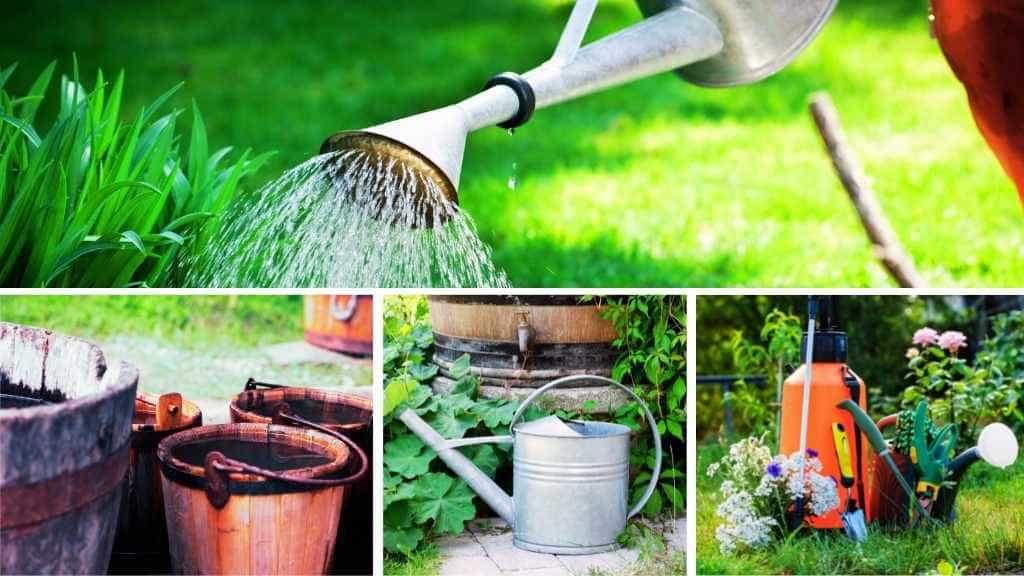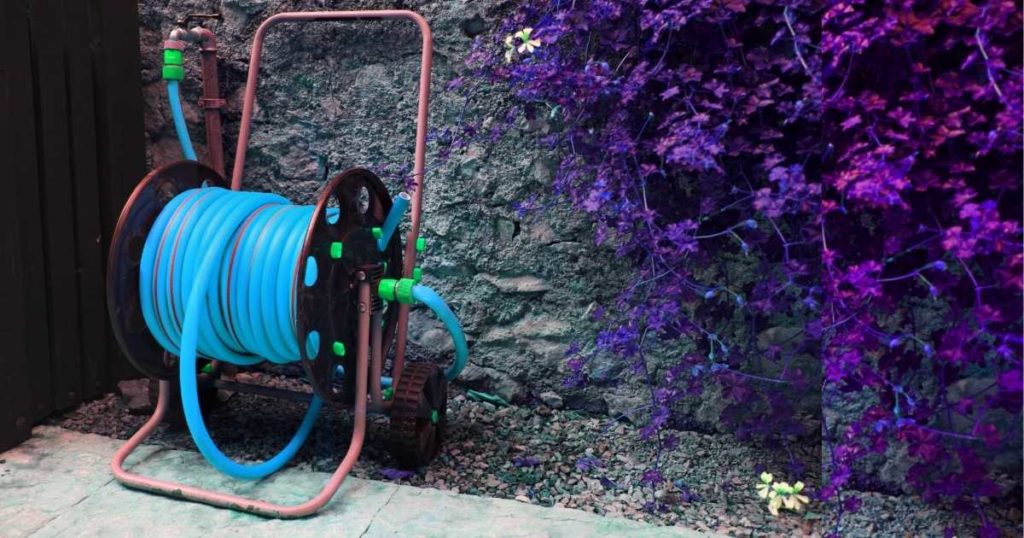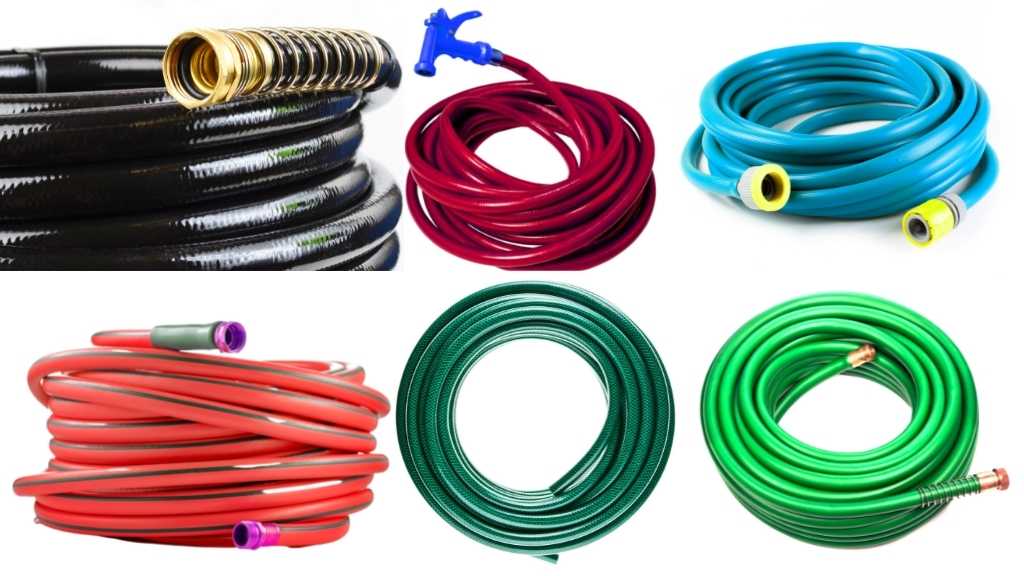We talk a lot about the factors to keep in mind when choosing different garden watering tools. When you want to choose a watering wand for your garden hose, you should consider similar types of features as when choosing most hose nozzles.
The simple process is to first decide on how you will use the watering wand. Do you want to use it only for watering plants and flowers? Do you want to water only hanging baskets, shrubs, and garden beds? Or do you want to use it for all the other tasks that a standard garden hose is used for?
As watering wands have a smaller or longer lance, some models might become harder to maneuver for people suffering from arthritis, for example. But the maneuvering difficulty is sometimes experienced by people who have other temporary physical difficulties, for example, in raising their arms. If you have such difficulties, the rain wand length and weight become very important.
In this post, we will provide useful details to consider before purchasing a watering wand for your garden hose. We count that the below information will help you choose wisely and will clarify the main features that a water wand should have.
To choose a watering wand consider the below features of the product:
1. The Hose Wand Technical Features - Water flow (GPM) and Water Pressure (PSI) specs
If you use your wand only for watering plants, you want to choose a hose wand that delivers the necessary amount of water, with moderate pressure. If the wand nozzle is built to save water while using, even better.
The PSI and GPM rates mentioned on the wand packaging will give you a good indication of the technical capabilities of the wand.
We always choose the nozzles that have medium PSI and GPM rates, and we did the same with our water wand.
In our opinion, medium pressure is 50 PSI, and in terms of water flow, the medium is 2.5 GPM to 5 GPM.
2. The Material Quality of The Wand Hose Attachment
When it comes to hose wands, the material quality refers to all wand components and the quality of the entire assembly, in general.
A hose wand can have high-quality individual components, but if they are not perfectly combined into the full wand assembly, you can face a lot of issues while using it. The most common is the leakage problem or the poor overall functionality of the water wand.
Therefore, be careful of all these aspects when making your choice.
When choosing a wand for your garden hose, look for the types of materials mentioned below.
Most watering wands have a non-slip ergonomic grip, coated with soft plastic or rubber. This makes the wand comfortable and easy to hold.
The hose wand body is usually made of lightweight metal, in most cases professional grade aluminum and zinc alloy. These materials are rust and corrosion resistant and do not wear out easily. They make the wand easy to use and increase its lifespan.
Depending on the brand, the watering wand handle or trigger is made from different materials. Either metal, sturdy plastic alloys, or a combination of the two. Some say that plastic might be less durable than metal. This can be true when cheaper plastic is used but, in most cases, plastic handles last as much as metal ones.
On the other hand, a metal component on the wand will more likely increase its weight. Weight has a direct impact on the ease-of-use factor.
The nozzle head of the hose wand is usually made of a plastic and metal combination.
3. Hose Wand Length
There are two main types of watering wands. The fixed-length hose wands and the expandable or telescopic wands.
The fixed-length wands can have anywhere between 15inch to 40inch length. But most fixed-length wands are more likely on the lower end of this range.
If you choose a fixed-length watering wand, make the necessary measures before. This helps you understand how high or how far it can reach as there is no option to adjust its length after.
If you choose a longer watering wand, consider the storage issues that you might face when you are not using it.
The expandable hose wands can extend to more than 50 inches, depending on the model or brand. They are more versatile, and you don’t have to worry about measuring distances.
But in many cases, these types of water wands are also more prone to leakage problems.
Storage is not an issue in this case as they are retractable, and they will easily fit where your other watering tools are stored. But, depending on their potential length, their weight can be considerably higher than the shorter fixed-length wands.
4. The Adjustable Nozzle Head Position
As we normally use watering wands to distribute water to hard-to-reach spots, a pivoting nozzle head feature becomes a must.
This basically allows you to switch the hose wand nozzle head to different positions, either horizontally or vertically. And by doing this, you will be able to cover all remote spaces or corners where your normal nozzle would not reach.
Make sure the watering wand you pick has this feature included.
5. Ease of Use – watering wand maneuvering options and overall weight
As mentioned in the previous part, weight is an important factor to consider when purchasing a watering wand and a hose nozzle, in general. When holding heavier tools for long periods will tire your hand while watering.
If you are not sure what the ideal weight is and you can’t physically hold the water wand in your hands before purchasing it, compare its weight with other similar models. Our advice is to always choose a lighter model as it will be more comfortable to use, in the long run.
In terms of maneuvering options, a watering wand can be actioned in different ways.
Some hose wands have a pistol grip with a front or rear trigger. Other models have a shut-off valve placed near the grip. And others have a thumb control valve.
Our personal preference is the watering wand actioned via a thumb control valve. We think it is the easiest to use type for turning the water On or Off but also for controlling the water flow while using it.
6. Available Watering Patterns of The Wand Nozzle
The watering wands can have a single spraying pattern available, or multiple watering patterns.
The single spraying type is what we call a rain wand. The water stream produced by these types of hose wands mimics the natural raindrop pattern. Plants love this type of stream, which is a mix of water and air, which distributes the water evenly using moderate-low pressure.
Watering wands can also have a multi-pattern nozzle head, just like any other standard hose nozzle. The same types of stream patterns are provided, and you can use each for different purposes. Basically, you can use this type of hose wand just like any other water nozzle.
As we already have some standard water nozzles already, we only use the hose wand for watering hanging baskets and seedlings. And therefore, we chose a rain wand with a single, gentle rain shower stream type.
If you are still hesitating or are not sure which brand or model to choose, we compiled a shortlist based on our personal preferences.
Check them out and decide which one fits most of your needs!
- 5 Best Soft Rain Watering Wands – Single Stream Watering Wands with Soft Shower Pattern (2022)
- 5 Best telescopic watering wands with a pivoting nozzle head (2022)
- 5 Best Multipattern Thumb Control Watering Wands for People With Arthritis (2022)
- 5 Best Telescopic Gutter Cleaning Wands for Gardening Hose (2022)



